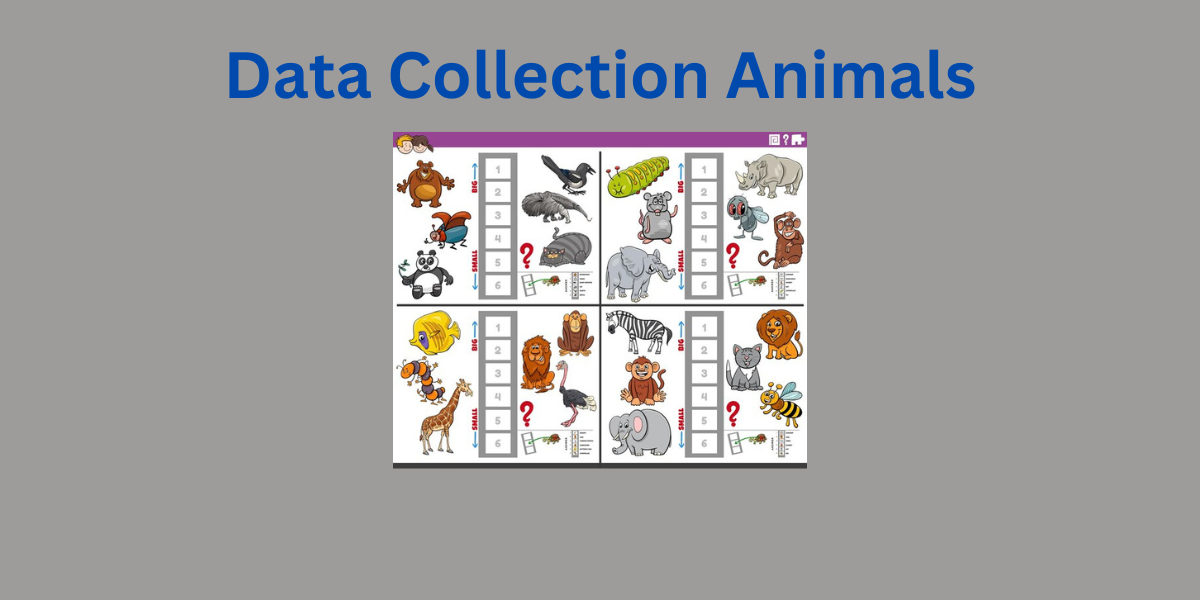Introduction
Animal science plays a crucial role in agriculture, veterinary medicine, and wildlife conservation. Accurate data collection is essential to making informed decisions in breeding, health management, and animal welfare. Without proper data, advancements in these fields would be significantly limited.
Types of Data in Animal Science
Qualitative vs. Quantitative Data
- Qualitative Data: Descriptive observations such as animal behavior and coat color.
- Quantitative Data: Measurable parameters like weight, milk yield, and growth rates.
Primary vs. Secondary Data
- Primary Data: Collected firsthand through experiments, surveys, or direct observation.
- Secondary Data: Information obtained from previous research, databases, or industry reports.
Observational Data Collection Methods
Direct Observation
Researchers physically monitor animals in natural or controlled environments to record behaviors and interactions.
Video Recording Technology
Modern camera systems allow continuous monitoring of animals, reducing observer bias and enhancing data accuracy.
Experimental Data Collection Methods
Controlled Experiments
Laboratory settings ensure precise control over variables, making it easier to establish cause-and-effect relationships.
Field Trials
These involve testing interventions (e.g., feed supplements) in real-world settings to assess their impact on animal performance.
Surveys and Questionnaires
Owner-Based Surveys
Collecting data from pet owners or farmers provides insights into animal health, nutrition, and behavior.
Farm and Industry Surveys
Large-scale surveys help understand trends in livestock production and management practices.
Biometric Data Collection
Measuring Body Weight and Size
Used in growth studies, disease monitoring, and breeding selection.
Biometric Sensors
Wearable devices track vital signs such as heart rate and temperature.
Genetic Data Collection
DNA Sequencing
Advanced genomic techniques help identify desirable traits for selective breeding.
Pedigree Analysis
Tracking ancestry helps improve genetic diversity and health outcomes.
Behavioral Data Collection
Ethograms and Behavioral Scoring
Systematic recording of animal behaviors to study stress, social interactions, and activity levels.
Automated Behavior Tracking
AI-powered tools analyze movement patterns to detect health issues early.
Nutritional and Metabolic Data Collection
Feed Intake Monitoring
Automated systems track food consumption to optimize diets.
Blood and Fecal Analysis
Biochemical tests reveal metabolic health and nutrient absorption.
Reproductive Data Collection
Estrus Detection
Monitoring hormone levels or activity changes helps in breeding programs.
Artificial Insemination Tracking
Data collection ensures successful reproduction and genetic improvement.
Technological Advances in Data Collection
IoT and Wearable Sensors
Devices provide real-time health monitoring, reducing manual labor.
Machine Learning in Animal Science
AI analyzes vast datasets to improve predictions and management strategies.
Challenges in Data Collection
Ethical Concerns
Ensuring humane treatment of animals is a priority in research.
Data Accuracy and Reliability
Maintaining consistency in measurements is critical for reliable conclusions.
Best Practices for Data Collection
Standardization of Methods
Using uniform protocols improves comparability across studies.
Proper Training and Calibration
Ensuring personnel are well-trained minimizes human error in data collection.
Applications of Data Collection in Animal Science
Improving Animal Welfare
Better data leads to enhanced living conditions and reduced stress for animals.
Enhancing Productivity and Breeding
Data-driven decision-making optimizes genetic selection and farm management.
Conclusion
Accurate and reliable data collection is the backbone of animal science research and application. With continuous advancements in technology, data collection methods will become more efficient and insightful, leading to better animal health, productivity, and welfare.
FAQs
- Why is data collection important in animal science?
It helps improve breeding, health management, and animal welfare through informed decisions. - What is the most common data collection method in animal science?
Observational studies and biometric monitoring are widely used. - How does technology enhance data collection in animal research?
AI, IoT, and automated sensors provide real-time and more accurate data. - What are the ethical concerns in data collection for animal science?
Ensuring humane treatment, avoiding stress, and maintaining transparency in research. - How can farmers benefit from advanced data collection methods?
Improved disease detection, optimized feeding, and better reproductive management.

